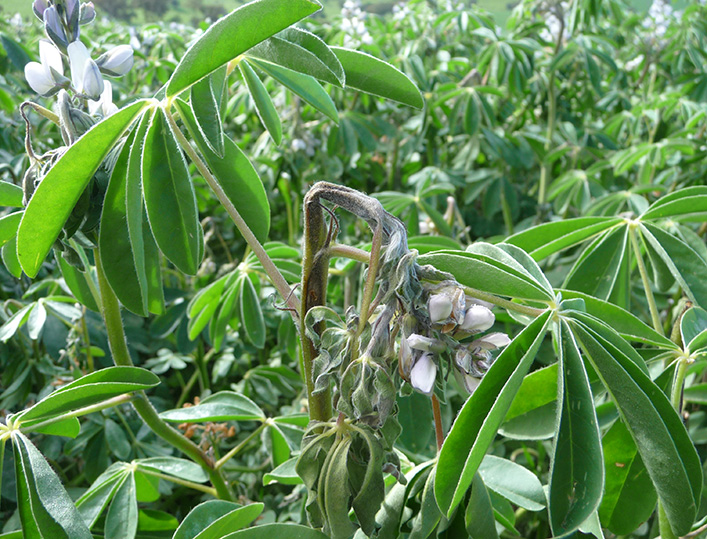
Critical lupin anthracnose management
9 Apr 2018

NSW Department of Primary Industries (DPI) has reminded farmers that this season is critical in the strategic management of the devastating disease, lupin anthracnose.
DPI plant pathologist, Kurt Lindbeck, said surveys across NSW in 2017 found no evidence the disease has spread beyond six Riverina properties identified with the disease in 2016.
“That’s good news, but infected seed could remain undetected and this season every NSW lupin crop must be managed as a possible disease risk,” Dr Lindbeck said.
“Fungicide seed treatment is crucial in implementing an anthracnose management plan as infected seed is the primary means of pathogen survival and spread.
“Lupin seed can be cleaned and treated with a fungicide now in preparation for sowing this season.
“Rhizobia should be applied to seed at sowing, to maximise survival and minimise exposure to fungicide seed dressings, which are toxic to rhizobia.”
NSW DPI advises producers follow the five point lupin anthracnose management plan:
- Lupin seed should be treated with a fungicide treatment containing thiram
- 2018 lupin crops should be isolated from last year’s lupin stubble
- Control volunteer lupins on your property
- Control machinery and people movement into and out of lupin crops
- Apply foliar fungicide containing mancozeb, chlorothalonil or azoxystrobin at six to eight weeks post emergence with a follow-up treatment at pre-canopy closure
Western Australia research found follow-up foliar fungicide applications in combination with seed applied fungicides were highly effective in reducing the transmission of anthracnose between seasons.
Lupin anthracnose was first detected in NSW commercial lupin crops in October 2016.
The infection was isolated and controlled, with the six affected Riverina properties now subject to restrictions under biosecurity legislation, which prevents lupin crop cultivation until eradication is confirmed.
Cootamundra-Gundagai, Coolamon and Junee shires remain in a Biosecurity Zone, which was created to control lupin anthracnose, with specific restrictions placed on properties with boundaries within one kilometre of the affected properties.
Residents of these three shires are not permitted to grow ornamental Russell lupin to help protect commercial lupin crops.
Photographs available from bernadette.york@dpi.nsw.gov.au
More information
Media contact: Bernadette York (02) 6938 1664, 0427 773 785

